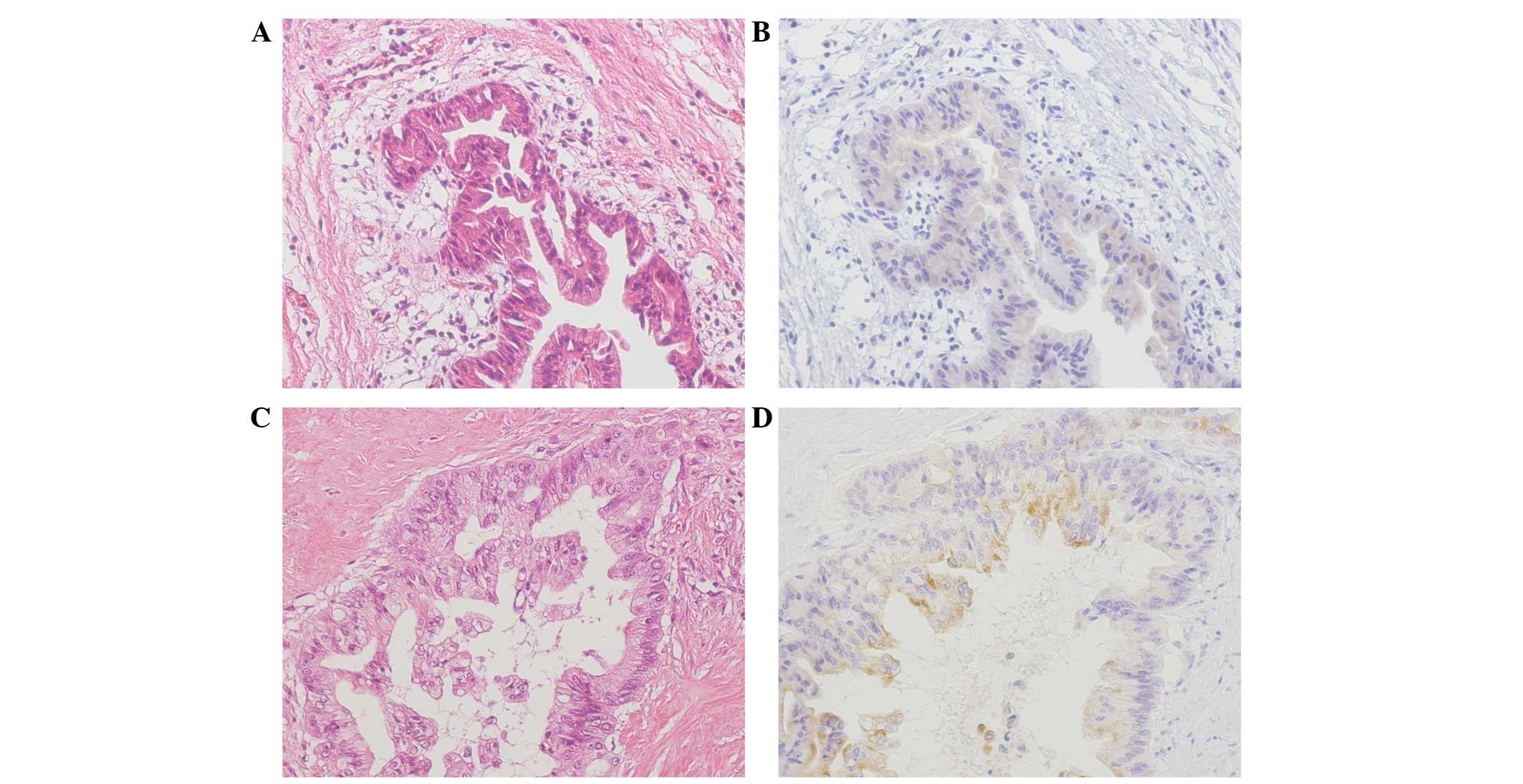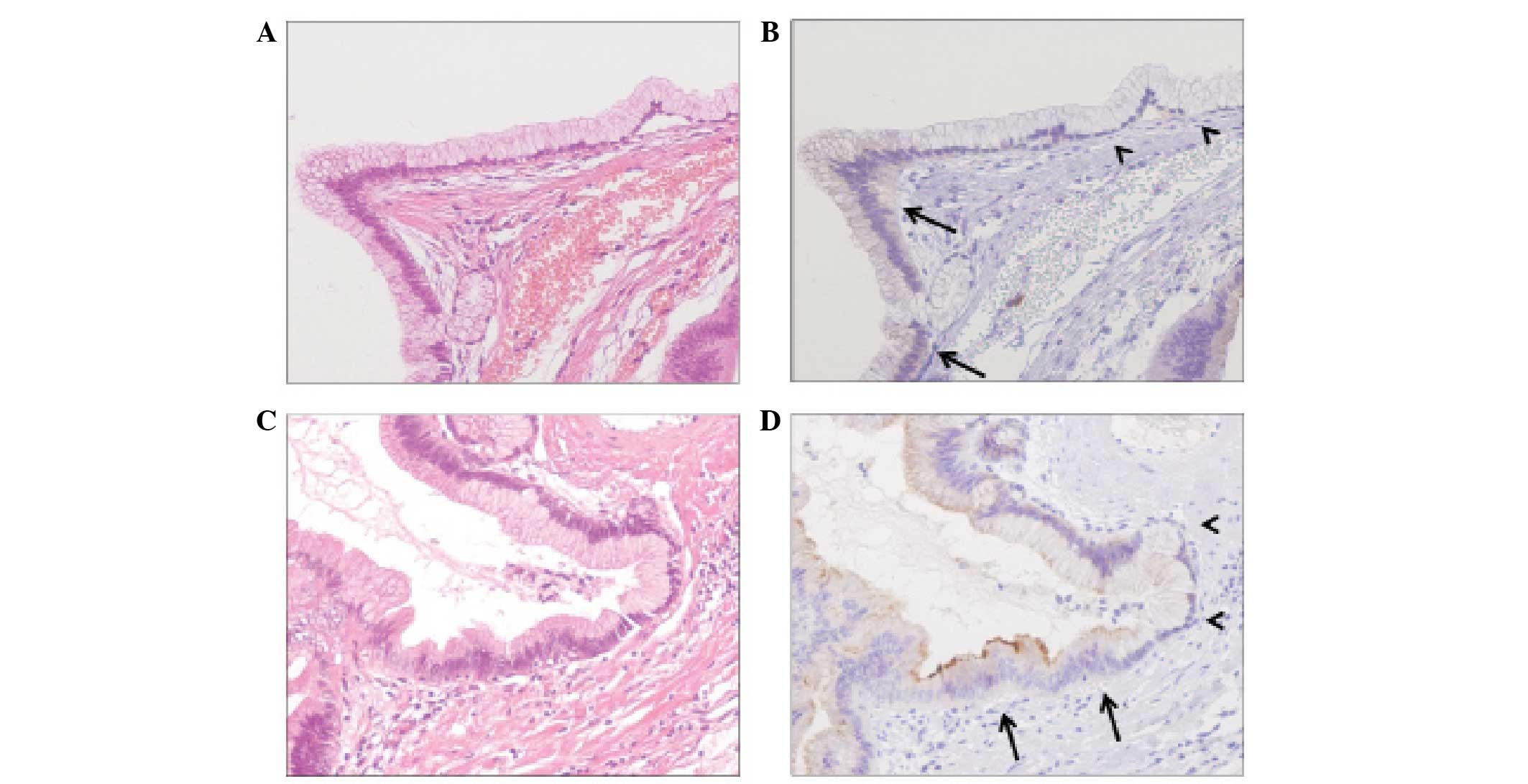Importance of luminal membrane mesothelin expression in intraductal papillary mucinous neoplasms
- Authors:
- Published online on: February 17, 2015 https://doi.org/10.3892/ol.2015.2969
- Pages: 1583-1589
-
Copyright: © Einama et al. This is an open access article distributed under the terms of Creative Commons Attribution License.
Metrics:
Total
Views: 0 (Spandidos Publications: | PMC Statistics:
)
Total PDF Downloads: 0 (Spandidos Publications: | PMC Statistics:
)
Abstract
The present study demonstrated that luminal membrane mesothelin expression is a reliable prognostic factor in gastric cancer. Intraductal papillary mucinous neoplasms (IPMNs) often exhibit a spectrum of dysplasia, ranging between adenoma and carcinoma. Therefore, an immunohistochemical analysis of mesothelin expression in IPMN was performed in the present study, focusing on the localization of mesothelin. IPMNs were classified into two groups, IPMNs associated with invasive carcinoma and low‑high (L‑H) grade dysplasias. The tumors were classified as mesothelin‑positive or ‑negative and in the mesothelin‑positive cases, the localization of mesothelin was evaluated as luminal membrane‑ or cytoplasmic‑positive. Among the 37 IPMNs, mesothelin expression was observed in 21 samples (56.8%), including 46.2% (12 out of 26) of the L‑H dysplasia and 81.8% (9 out of 11) of the invasive carcinoma samples (P=0.071). Luminal membrane localization was observed in 10 samples (27%), including 15.4% (4/26) of the L‑H dysplasia samples and 54.5% (6 out of 11) of the invasive carcinoma samples (P=0.022). Six patients experienced post‑operative recurrence, with five of the recurrent tumors exhibiting mesothelin expression and all six exhibiting luminal membrane localization. It was concluded that immunohistochemical examinations for mesothelin expression and localization are clinically useful for prognostic assessments and decision making regarding further treatment subsequent to surgical procedures in patients with IPMN.













